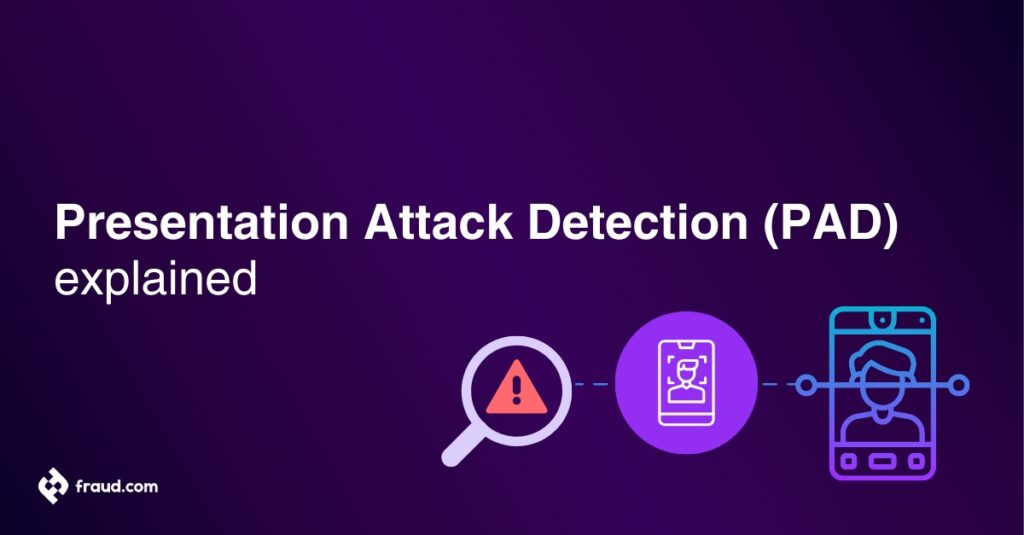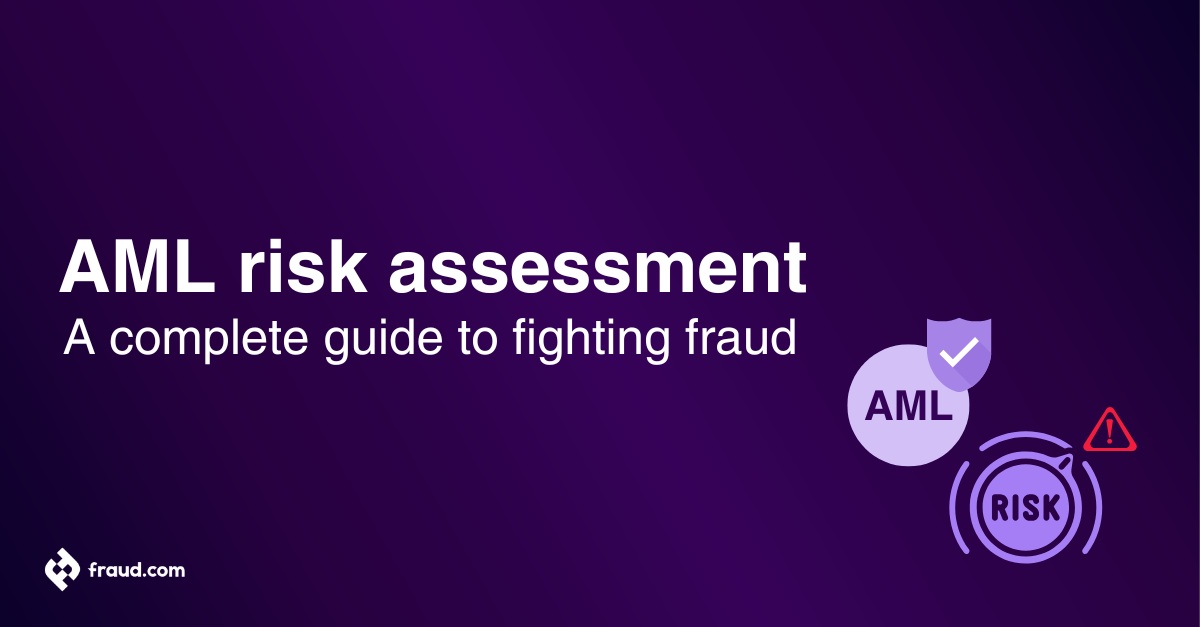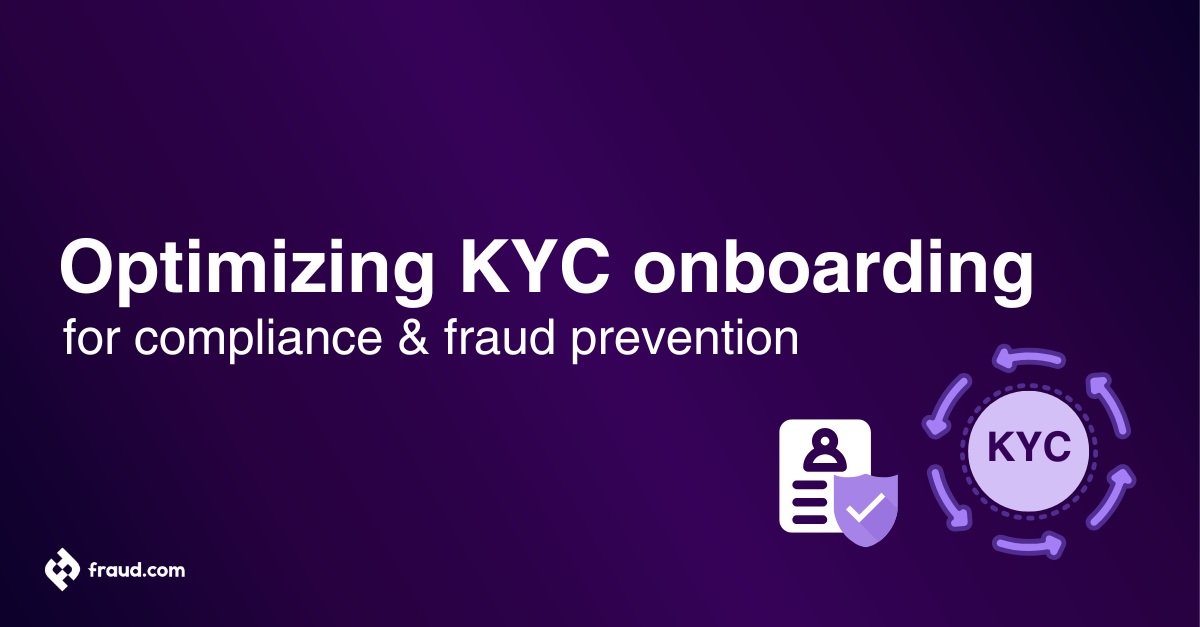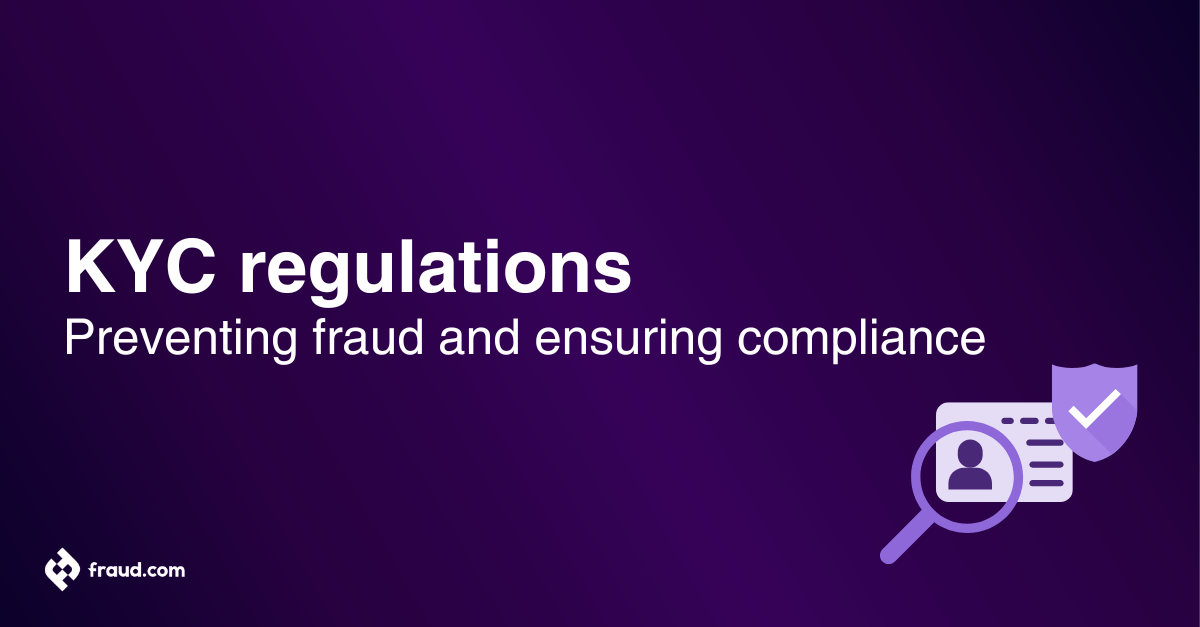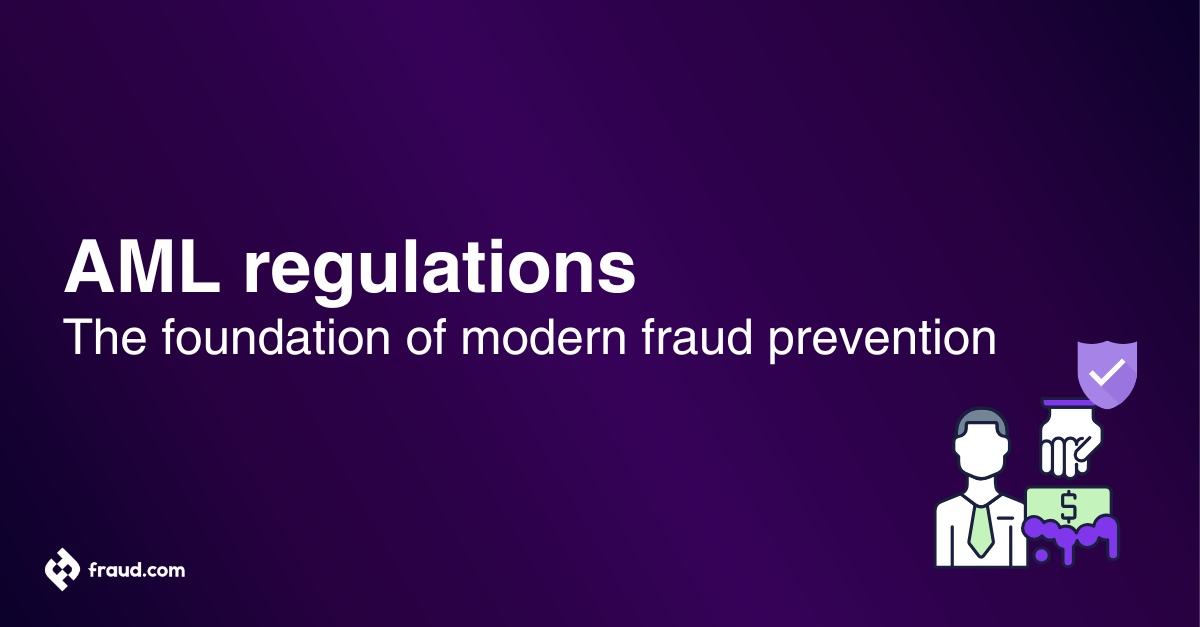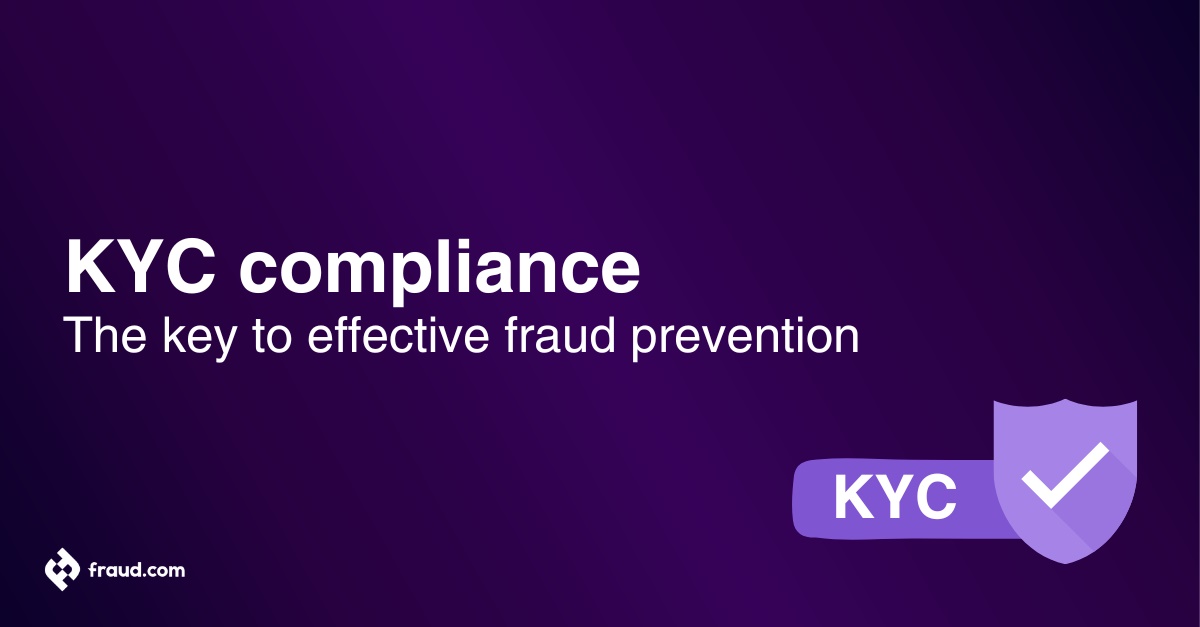Presentation Attack Detection (PAD) has become a significant safeguard against the increasingly sophisticated tactics employed by fraudsters. As technology continues to advance, so too do the methods used by fraudsters to get around security systems, underscoring the urgent need for resilient fraud prevention mechanisms. This article delves into the intricacies of PAD, exploring its critical role in protecting identity verification processes and strengthening authentication protocols.
By examining the core principles and growing significance of PAD, we aim to highlight its essential contribution to a secure digital ecosystem, empowering businesses to stay ahead in the ongoing battle against fraudulent activity. As the threat landscape grows more complex, understanding and implementing PAD is no longer optional, it’s a strategic necessity in maintaining trust and integrity across digital platforms.
What are presentation attacks?
Presentation attacks, also known as spoofing or impersonation attacks, involve attempts to deceive biometric authentication systems using fake or manipulated biometric samples. These attacks are designed to bypass security measures by presenting counterfeit representations of a person’s biometric traits, such as photographs, videos, 3D models, or synthetic fingerprints.
Common examples of presentation attacks include:
- Fake fingerprints made from materials like silicone or gel to imitate a real finger.
- Printed photographs or videos of a person’s face used to fool facial recognition systems.
- 3D masks or face models to impersonate an individual in facial recognition systems.
The goal of these attacks is to gain unauthorized access to secure systems or sensitive information by tricking the biometric system into accepting fraudulent data as legitimate. As biometric authentication becomes more prevalent, the need for effective Presentation Attack Detection (PAD) grows to safeguard against these deceptive tactics.
Table of Contents
ToggleWhat is Presentation Attack Detection (PAD)?
Presentation Attack Detection (PAD) is a set of advanced technical measures and protocols designed to identify and prevent presentation attacks; attempts to deceive biometric systems using counterfeit representations. Involving the use of fake biometric samples, such as forged fingerprints, photos, or videos, intended to fool authentication systems and gain unauthorized access.
PAD technologies employ a variety of strategies to detect fraudulent activity, including sophisticated algorithms, machine learning models, and sensor-based techniques. By analyzing both physical and behavioral characteristics of biometric samples, PAD systems can detect signs of tampering and ensure that the sample presented for authentication comes from a live individual, not a fabricated copy.
As biometric authentication becomes increasingly prevalent in sectors like finance, healthcare, and online services, the importance of PAD continues to grow. By ensuring the integrity of biometric verification processes, PAD not only prevents security breaches but also strengthens trust in digital interactions. This is vital for businesses and consumers who rely on secure, authentic digital engagements in today’s fast-evolving digital world.
How Presentation Attack Detection (PAD) works
As biometric authentication continues to gain prominence, the need to protect it from fraudulent activities becomes even more critical. Biometric Presentation Attack Detection (PAD) plays a vital role in preserving the integrity of these systems by accurately identifying and mitigating fake biometric samples. This process involves a series of advanced techniques designed to evaluate and prevent presentation attacks, fraudulent attempts to mimic or deceive biometric systems using counterfeit representations. Here’s how it works:
Sensor-based techniques
Sensor-based methods form the first line of defense in PAD, utilizing specialized hardware to evaluate presentation attacks. For example, infrared sensors detect blood flow beneath the skin, allowing the system to accurately distinguish between genuine fingerprints and fake ones, such as those made from latex masks or other presentation attack instruments.
Similarly, 3D cameras analyze facial depth and contours, identifying bona fide facial features and distinguishing them from printed photos or other flat presentation attack instruments like masks or synthetic models. These sensors are key to preventing spoofing attempts that rely on shallow or lifeless replicas, such as video replays or replay attacks.
Software algorithms
The software side of PAD employs machine learning and artificial intelligence algorithms to scrutinize biometric physical characteristics for subtle anomalies. These algorithms are trained to recognize patterns that may signal fraudulent activity, such as unnatural eye movements or irregularities in fingerprint ridge patterns. Over time, these systems learn from vast datasets, continuously adapting to new types of attacks, including those designed to evade detection. By evaluating presentation attacks through intelligent software, PAD becomes increasingly capable of identifying sophisticated fraud attempts that may not be immediately obvious.
Liveness detection
A crucial aspect of PAD is liveness detection, which ensures that the biometric sample being presented is from a live person and not a static object, such as a printed photo or video replay. Techniques like analyzing involuntary eye movements, detecting pulse changes in facial skin tone, or prompting actions like blinking or smiling add an extra layer of verification. These methods help confirm the bona fide nature of the biometric sample, distinguishing between genuine biometric characteristics and counterfeit materials that may be used in presentation attacks.
Multimodal approaches
To further enhance security, many PAD systems combine multiple biometric modalities, such as facial recognition and voice recognition, or even fingerprints and iris scans. By cross-referencing various biometric traits, these systems become more reliable and less vulnerable to fraud attempts. This multimodal approach makes it significantly more difficult for attackers to bypass authentication by mimicking a single biometric trait. Whether through video replays or latex masks, multimodal systems can detect inconsistencies that would be difficult to replicate across multiple biometric channels.
Real-time detection and adaptability
One of the most significant advantages of modern PAD systems is their ability to provide real-time detection, instantly flagging any fraudulent attempts. As fraud tactics evolve, these systems remain adaptable, continuously learning from emerging threats. Whether it’s a new method of presentation attack instruments or more sophisticated replay attacks, PAD systems can be updated to stay one step ahead. This ensures continuous protection in high-stakes environments where even a slight delay could compromise security.
By combining advanced sensor-based techniques, intelligent software algorithms, liveness detection, and multimodal approaches, PAD offers a comprehensive defense against increasingly sophisticated fraud attempts. These innovations ensure that biometric authentication systems remain secure, reliable, and trustworthy in the face of evolving threats.
As standards like ISO/IEC 30107-3 continue to shape the future of biometric presentation attack detection, the ability to protect against presentation attacks will only grow stronger, enhancing digital security across sectors that rely on biometric identification.
The role of PAD in verifying biometric identity
In today’s digital world, Presentation Attack Detection (PAD) is crucial for ensuring biometric systems remain secure and trustworthy. By detecting fraudulent biometric samples, PAD strengthens authentication and reduces fraud risks. Here’s how PAD contributes to biometric identity verification:
- Strengthening authentication: PAD ensures only authentic biometric data from live individuals is used, preventing unauthorized access via counterfeit samples like photos or videos.
- Mitigating fraud risks: PAD detects presentation attacks, distinguishing between genuine and fake biometric data, reducing identity theft and fraud risks.
- Building consumer confidence: By protecting biometric data, PAD reassures users, fostering trust and encouraging wider adoption of biometric systems.
- Facilitating compliance: PAD helps businesses meet regulatory standards by securing biometric authentication systems, ensuring compliance with data protection laws.
- Enabling seamless experiences: PAD operates quietly in the background, ensuring quick, non-intrusive authentication without disrupting the user experience.
10 use cases of PAD
Presentation Attack Detection (PAD) is a vital technology in industries that rely on biometric authentication for security and identity verification. By preventing fraud through the detection of counterfeit biometric samples, PAD helps maintain the integrity and trustworthiness of biometric systems. Below are 10 key use cases:
1. Financial services and banking
PAD secures biometric authentication in banking apps, mobile banking, and ATMs by ensuring that only live, genuine biometric data is used. This prevents fraudsters from using photos, videos, or synthetic fingerprints to gain unauthorized access to accounts, safeguarding financial transactions and protecting customers’ assets.
2. Mobile and online authentication
In mobile devices and apps, PAD ensures that facial recognition, fingerprint scans, and other biometric methods are not spoofed by photos or videos. It provides an added layer of security for unlocking devices, authorizing payments, and accessing sensitive applications, ensuring only legitimate users gain access.
3. Healthcare and patient identification
In healthcare, PAD ensures that biometric systems used for accessing medical records and patient data are secure. It helps prevent unauthorized access by verifying that biometric samples, such as fingerprints or facial recognition, are genuine and presented by live individuals, maintaining compliance with privacy regulations like HIPAA.
4. Border control and immigration
At border checkpoints, PAD is used to secure biometric systems for passport control and immigration. By verifying that biometric data, such as facial recognition or fingerprints, is authentic and from a live person, PAD helps prevent fraud and ensures that only legitimate travelers are allowed to pass through security, improving both security and efficiency at airports.
5. Smart devices and IoT
PAD protects personal devices such as smartphones, laptops, and smart home systems by ensuring biometric authentication is not compromised. It prevents attackers from using fake biometric samples (like photos or videos) to unlock devices or access sensitive data, safeguarding users’ personal information and maintaining the security of IoT systems.
6. E-commerce and online payments
PAD secures online transactions by verifying that biometric authentication, such as fingerprint or facial recognition, used for payment authorization is genuine. This reduces the risk of fraud during online purchases, boosting consumer confidence in digital payment systems.
7. KYC (Know Your Customer)
In industries that require KYC compliance, such as banking or fintech, PAD ensures that biometric data submitted during onboarding is authentic. By detecting fake biometric samples, PAD prevents identity fraud and helps companies comply with regulations while protecting their customers’ identities.
8. Access control and secure facilities
PAD enhances security in access control systems, whether for corporate offices, government buildings, or data centers. By verifying that biometric samples used for entry are from live individuals, PAD prevents unauthorized access and ensures physical security, especially in high-risk environments.
9. Point of Sale (POS) systems
In retail environments, PAD secures biometric-based POS transactions, ensuring that customers’ biometric data used to authorize payments is genuine. It prevents fraudsters from using photos or videos to mimic a legitimate customer, thereby reducing the risk of payment fraud.
10. Air travel and airport security
At airports, PAD ensures that biometric systems used for check-in, security, and boarding are secure. By verifying that biometric samples (like facial scans or fingerprints) are authentic and from live passengers, PAD prevents fraudulent attempts to bypass security, improving both safety and efficiency in air travel.
Active vs. passive Presentation Attack Detection (PAD)
Presentation Attack Detection (PAD) includes two primary approaches: active and passive detection. Each method has its own strengths and applications. These approaches play a vital role in protecting biometric authentication systems by identifying and preventing fraud.
Active PAD – Engaging user interaction for enhanced security
User involvement: Active PAD requires user participation during the authentication process to confirm that the biometric sample is from a live person. This interaction helps ensure the authenticity of the biometric data.
Techniques used: Active PAD techniques often involve prompting users to perform specific actions, such as blinking, smiling, or moving their head. These actions make it difficult for fraudsters to use static images or videos to bypass the system.
Applications: Active PAD is ideal for use cases where user interaction is feasible and appropriate, such as mobile device authentication or ATM transactions. It offers a high level of security but may slightly interrupt the user experience due to the need for active participation.
Passive PAD – Seamless monitoring for user-friendly security
Minimal user disruption: Passive PAD operates quietly in the background, without requiring any actions from the user. It offers a smooth, non-intrusive authentication experience while maintaining high security.
Techniques used: This method relies on advanced algorithms and sensor technologies to detect signs of liveness. For example, it can analyze natural eye movements, micro-expressions, or changes in lighting and reflections to verify that the biometric data comes from a live person.
Applications: Passive PAD is well-suited for environments where user convenience is a priority, such as online platforms or self-service kiosks. It provides robust security without disrupting the user experience, making it ideal for seamless, frictionless authentication.
Choosing the right PAD approach
Balancing security and user experience: The choice between active and passive PAD depends on the application’s needs. Active PAD offers stronger security with user actions, while passive PAD ensures a smoother, uninterrupted experience. Businesses must balance robust fraud protection with user convenience.
Integration of both methods: Many organizations combine active and passive PAD to leverage the strengths of each, enhancing security without sacrificing user experience.
Both approaches offer unique advantages in detecting presentation attacks. By understanding their strengths, businesses can select the right method or combination to secure biometric systems and ensure trustworthy authentication.
Advancements in PAD technology
With the digital environment’s evolution and the increasing complexity of cyber threat fraud strategies, Presentation Attack Detection (PAD) has emerged as a vital element in safeguarding biometric authentication systems. Driven by advancements in technology, PAD continues to evolve, enhancing both its accuracy and its ability to prevent fraud. These innovations are not only improving existing systems but also expanding the scope of PAD’s application across various industries.
Enhanced machine learning algorithms
Intelligent analysis: The integration of machine learning and artificial intelligence has revolutionized PAD systems, enabling them to detect even the most complex presentation attacks. These algorithms can process vast datasets, continuously evolving to identify new fraud patterns and subtle anomalies that may signal an attack.
Adaptability: Machine learning allows PAD systems to adapt to changing environments and user behaviors. By analyzing unique user profiles, these systems can offer consistent performance, reducing false positives while ensuring high accuracy across different use cases.
Improved sensor technologies
High-resolution cameras and sensors: The use of high-resolution imaging devices, such as 3D cameras and infrared sensors, has dramatically improved PAD’s ability to distinguish between authentic and fake biometric data. These sensors capture minute details, verifying the liveness of biometric samples and ensuring their authenticity.
Multispectral imaging: New multispectral imaging technologies that use multiple wavelengths of light provide deeper insights into biometric samples. By analyzing different layers of skin or materials used in counterfeit samples, these technologies can detect fraudulent attempts, such as masks or synthetic materials, with greater precision.
Integration with Multi-Factor Authentication
Layered security: Combining PAD with multi-factor authentication (MFA) enhances overall security by requiring additional layers of verification. In addition to biometric data, this approach incorporates other factors, like PINs or security tokens, creating a stronger, multi-layered defense against unauthorized access.
Real-time processing and cloud integration
Instantaneous verification: Advances in processing power and cloud technologies have enabled real-time analysis of biometric samples, ensuring that authentication decisions are made instantly and accurately. In environments that demand high security, such as financial services or border control, real-time verification is crucial to maintaining both security and efficiency.
Scalable solutions: Cloud-based PAD platforms are becoming more popular due to their scalability. They allow organizations to extend robust security measures across vast networks, all while minimizing the need for significant infrastructure investments. This scalability ensures that PAD can be deployed effectively across organizations of all sizes.
Personalized user experience
Context-aware systems: Emerging PAD technologies are increasingly context-aware, meaning they can adapt to user behavior and historical data. By personalizing the authentication process, these systems reduce unnecessary disruptions, offering a smoother user experience while maintaining stringent security standards.
Seamless integration: Modern PAD solutions are designed to integrate seamlessly with existing systems, ensuring that security enhancements do not disrupt workflows or compromise user convenience. This smooth integration is essential for ensuring that security measures do not hinder user adoption or experience.
How Udentify helps in Presentation Attack Detection (PAD)
Udentify is an advanced ID verification solution that strengthens biometric PAD with AI-powered liveness detection and multimodal authentication. Here’s how it works:
- AI-powered liveness detection: Udentify uses AI to detect biometric cues like blinking and facial expressions, ensuring the sample is from a live person and not a printed photo or video replay.
- Multimodal authentication: By integrating facial recognition and fingerprints, Udentify enhances security and prevents fraud using methods like latex masks or fake biometric characteristics.
- ISO/IEC 30107-3 compliance: Udentify adheres to the ISO/IEC 30107-3 standard, ensuring robust protection against fraud and compliance with best practices.
- Real-time fraud detection: Udentify performs instant analysis to block presentation attack instruments such as video replays and printed photos.
- Seamless integration: Easy to integrate into existing systems, Udentify provides scalable PAD solutions for diverse applications, from KYC to access control.
- Context-aware authentication: Adapts to user behavior for a smooth, secure experience with minimal disruption.
Udentify combines AI, multimodal authentication, and ISO/IEC 30107-3 compliance to offer effective protection against biometric fraud, ensuring secure, fraud-free authentication.
Presentation Attack Detection FAQ
FAQ Table
| Question | Answer |
|---|---|
| What are presentation attacks? | Presentation attacks, also called spoofing, involve attempts to deceive biometric systems using fake or manipulated biometric samples, such as photographs, videos, 3D models, or synthetic fingerprints, to gain unauthorized access. |
| What are examples of presentation attacks? | Examples include fake fingerprints made from materials like silicone or gel, printed photographs or videos of faces, and 3D masks or models to impersonate individuals. |
| What is Presentation Attack Detection (PAD)? | PAD consists of technical measures to identify and prevent presentation attacks by ensuring biometric samples come from live individuals. It uses techniques like machine learning, algorithms, and sensors to detect tampering. |
| How does PAD work? | PAD employs sensor-based techniques, software algorithms, liveness detection, and multimodal approaches to detect and mitigate fraud. It analyzes both physical and behavioral characteristics to confirm authenticity. |
| What are sensor-based techniques? | Sensor-based techniques use specialized hardware like infrared sensors and 3D cameras to detect biometric traits such as blood flow or facial depth, differentiating genuine samples from fake ones. |
| How do software algorithms contribute to PAD? | Software algorithms, often powered by machine learning models, detect anomalies in biometric patterns, such as irregular eye movements or unnatural fingerprint ridges, improving detection over time. |
| What is liveness detection? | Liveness detection ensures the biometric sample is from a live person by analyzing involuntary eye movements, detecting pulse changes, or prompting actions like blinking. |
| What are multimodal approaches in PAD? | Multimodal approaches combine multiple biometric traits, such as fingerprints and voice, for cross-referencing, enhancing reliability and reducing vulnerabilities to fraud. |
| What is the difference between active and passive PAD? | Active PAD requires user interaction (e.g., blinking or smiling), while Passive PAD operates seamlessly in the background (e.g., analyzing eye movements or lighting). |
| Why is PAD important? | PAD ensures secure authentication, reduces fraud risks, builds consumer trust, facilitates compliance with regulations, and enhances seamless user experiences. |
| What are the key use cases for PAD? | PAD is used in financial services and banking, mobile and online authentication, healthcare and patient identification, border control and immigration, smart devices and IoT, e-commerce and online payments, KYC compliance, access control, point-of-sale systems, and air travel and airport security. |

